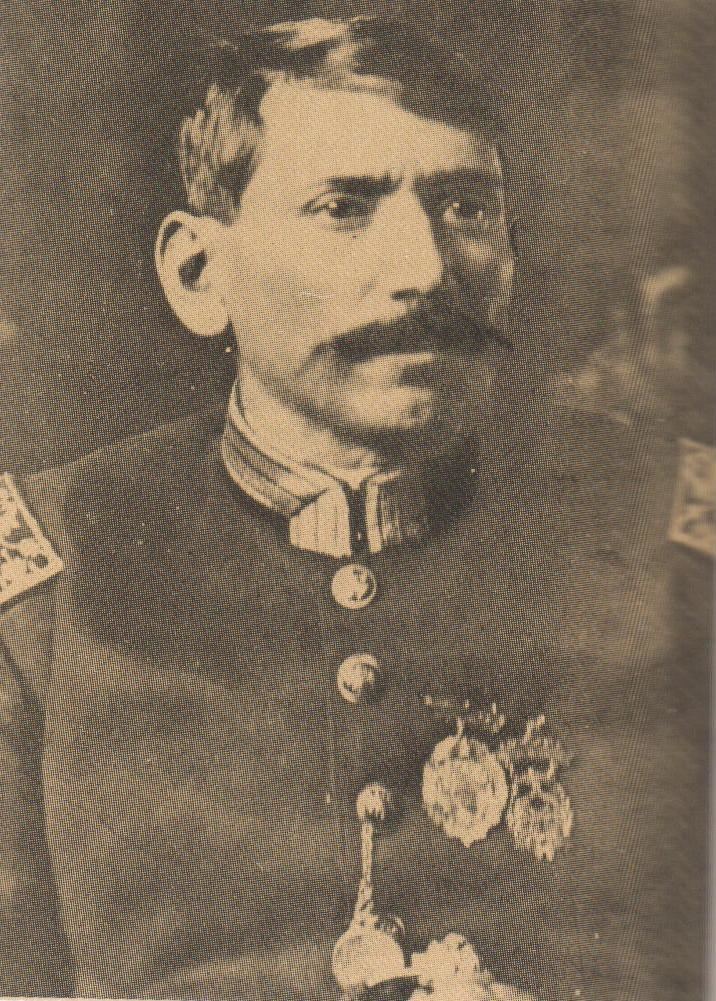Nationality Mexican Name Juan Carrasco | Occupation military Role General | |
 | ||
Died November 8, 1922, Nayarit, Mexico | ||
General Juan Carrasco (1878–1922), was a Mexican farmer and military who participated in the Mexican Revolution. He was Chief of Military Operations of Baja California, Sonora, Sinaloa and Nayarit.
Contents
Early years
Juan Carrasco was born in Puerta de Canoas, Mazatlan (Sinaloa, Mexico) on June 24, 1878. His parents were Feliciano Carrasco and Santos Aguirre. Carrasco was raised in El Potrero de Carrasco, near of Mazatlan. His childhood and youth were developed in the field, dedicated to helping to his parents to cultivate the land and livestock.
When he had eight years old he was sent to study in Mazatlan. However, three months after he returned to Rancho El Potrero, because his father had died, not going back to school. According to his biographer, he could not read or write. He dedicated himself to work and sell lime and building materials to support his family. He supported to Francisco I. Madero presidential candidate.
During the Revolution
In 1910, he joined to the Plan de San Luis Potosi, signed by Madero, who summoned the Mexican people to the revolution, ignoring the government of General Porfirio Diaz and the other authorities whose power dominated the popular vote. Carrasco enlisted in the forces of General Justo Tirado. His troop had 150 men and he fought on many places: La Noria, Venadillo, Rosario, the gorge of El Limon and in Mazatlan. After the triumph of the Madero cause, after the treaties of Ciudad Juarez, went home to remain what he always had been: farmer (as he had no vocation as a soldier, but a rancher who lived of the products of their lands).
In 1913, when his ex-boss Jesus Tirado took up arms against the government of Madero, Carrasco was released back into the fight.
Huerta, who soon learned what the Governors who allegedly followed the Madero ideas were sent to apprehend Felipe Riveros, was captured by his minions on March 21, 1913.
When he learned of his arrest, he tried to communicate with him, but this was not possible, so he got up with 50 men, who were the ones he could assemble.
So, at first his work was focused on cutting guerrilla communications and prevent the traffic of trains with federal troops. Some friends of Mazatlan sent urgent messages telling him that Huerta would apprehend Riveros, so, he left his ranch to have two fights in La Bola and El Potrero Chico, with Captain Meza and Juan Canedo. Thus began his fight with 95 men. After fighting in El Limon and El Venado, fought in La Loma, defeating 60 soldiers and taking away 80 horses. On that occasion he won arms, ammunition and several men with which he went on to Concordia. These battles were followed for battles in La Noria and Modesto.
On September 9, 1913 Quila take the square and then fought in El Habal and The Venadillo. Alberto T. Rasgado general was the head of an army of 1500 armed men, registering fighting in places such as Sequeiros, Badiraguato, Comederos, El Zopilote, El Conchi, The Milkweed and Tierra Blanca. In El Conchi, the troops defeated the federal column, composed of the second battalion of sappers and a fraction of the eighth battalion, taking away two guns and making many prisoners. Guerrero participated in the square of Mazatlan, with Ramon f.Iturbe general in 1914.
He reached the rank of brigadier general on November 1, 1915. He was head of several military zones in 1919 asked permission to Secretaria de Guerra y Marina (secretary of War and Marine) to withdraw of the army and accept the nomination to the government of Sinaloa (he had been persuaded by his friends to accept the nomination). The fall of presidency Venustiano Carranza, who was a supporter, force him to abandon his political plans. For personal questions, he dissociate of General Angel Flores, and championed the "antiobregonista" cause. In Guamuchilito, within the limits of Nayarit and Durango on November 8, 1922, he confronted forces, pursuing him on his way to Durango to join forces with General Francisco Murguia. Carrasco fought melee, but lost his life. He was buried in the cemetery of El Potrero.
Personal life
He married Mrs. Manuela Lizarraga having two children, Rafael and Concepcion.
Historian and writer of Sinalola Jose Juan Carrasco C. Valdes described to Juan Carrasco as Follows: "Juan Carrasco was one of the most salient characterizations of rural Mexican Revolution. Rustic and illiterate man; but generous and honest, had a creative vocation. Intuitive by nature, loved freedom. He believed in the social and political equality of men. He was excited for the progress. He had a lively intelligence and enterprising, and felt a real passion for command and government. He lacked, however, as the vast majority of rural people, the sense of anticipation, so he could don´t the career that ambitioned surely and also, given their qualities, deserved."
In 1910 he was known at the end of the revolution with the nickname "El Calero". All his soldiers were volunteers; many of them were his relatives and most of the others had worked with him. He allowed the soldiers themselves named their classes and bosses. Also, if a soldier killed another, Carrasco allowed the other soldiers in his troop shot him because he did not want that there had treacherous between them.
Carrasco felt entitled to be just a humble servant of the Army and the people; their aspirations were satisfied in the place where he came to be. On several occasions he was offered high positions, but he refused it.
